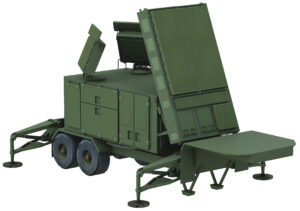Here is an interesting article about why the US reject the bid of Chinese company to buy the LED subdivision of Phillip. Here the proof again that when it come to judging the scientific or industrial progress. You cannot use the same metric as any other country because China is under severe technological embargo
HONG KONG — China is spending billions of dollars on a major push to make its own microchips, an effort that could bolster its military capabilities as well as its homegrown technology industry.
Those ambitions are starting to be noticed in Washington.
Worries over China’s chip ambitions were the main reason that United States officials blocked the proposed purchase for as much as $2.9 billion of a controlling stake in a unit of the Dutch electronics company
by Chinese investors, according to one expert and a second person involved with the deal discussions.
The rare blockage underscores growing concern in Washington about Chinese efforts to acquire the know-how to make the semiconductors that work as the brains of all kinds of sophisticated electronics, including military applications like missile systems.
In the case of the
deal, the company said late last month that it would
a March 2015 agreement to sell a majority stake in its auto and light-emitting diode components business known as Lumileds to a group that included the Chinese investors GO Scale Capital and GSR Ventures. It cited concerns raised by the Committee on Foreign Investment in the United States, which reviews whether foreign investments in the country present a national security risk.
James Ding Jian, managing director and chairman of GSR Ventures, whose bid for Lumileds was blocked by the United States for national security reasons. Credit Imaginechina
Philips that despite efforts to alleviate concerns, the mcomittee — known as Cfius — did not approve the transaction.
“There is a belief in the Cfius community that China has become innately hostile and that these aren’t just business deals anymore,” said James Lewis, a senior fellow at the Center for Strategic and International Studies, a research firm, who speaks to people connected with the committee’s process.
Philips did not respond to requests for comment. GSR Ventures, which sponsors GO Scale Capital, declined to comment.
Cfius, an interagency body that includes representatives from the Treasury and Justice Departments, declined to comment and does not make its findings public.
Cfius reviews have been a growing problem for outbound Chinese deals. According to the most recent
, in 2012 and 2013 Chinese investment accounted for more committee reviews than money coming from any other country. A 2008 Chinese effort to
in the network equipment company 3Com was withdrawn while the committee was reviewing it.
Recently, the committee found acceptable a number of major Chinese deals, including a takeover of Smithfield Foods by Shuanghui International and Lenovo’s takeover of IBM’s low-end server unit. In 2012, President Obama
a Chinese company to stop building
near an American military installation in Oregon after a negative Cfius review.
At the center of the committee’s concerns on the Philips deal, according to Mr. Lewis, was a little known but increasingly important advanced semiconductor material called gallium nitride. Though not a household name like silicon, gallium nitride, often referred to by its abbreviation GaN, could be used to construct a new generation of powerful and versatile microchips.
It has been used for decades in the low-energy light sources known as
, and it features in technology as mundane as Blu-ray Disc players. But its resistance to heat and radiation give it a number of military and space applications.
Gallium nitride chips are being used in radar for antiballistic missiles and in an Air Force radar system, called Space Fence, that is used to track space debris.
WASHINGTON: It’s been a big week for
. But sometimes the big story isn’t what you think. While headlines have focused on the US government’s decision to allow
, arguably the most important
change involved a material called gallium nitride (GaN).
“The gallium nitride story is an under-reported and really revolutionary development,” defense industry analyst and consultant
told me this morning. “People are saying it’s the biggest invention in semi-conductors since silicon.”
Loren Thompson
, after a year-and-a-half-long process, the government granted
permission to export the latest upgrade of its Patriot
system to 22 countries. (No one’s actually bought the upgrade yet, but the 12 current and 10 prospective Patriot customers on the list are now effectively pre-approved). The upgrade isn’t even to the Patriot missile itself, but to the radar.
The new technology improves reliability, range, and coverage. The only visible difference, though, is a pair of adorably ear-like extra panels at the back that give the radar a 360-degree field of view. But the “secret sauce” that makes the upgrade possible, Raytheon spokesman Michael Nachsen told me, is gallium nitride — and this is the first time the government has allowed the export of GaN in a land-based radar.
The new (lower left) and old (upper right) Patriot radars.
Gallium nitride will “unquestionably” generate far more export dollars than armed drones, Thompson continued. “Gallium nitride is an embedded technology in potentially a vast array of systems,” he said, whereas armed drones are really one relatively narrow product category.”
Gallium nitride has such wide potential application — military and civilian — because it can carry higher voltage than older semiconductor materials. Higher voltage means higher efficiency, which in turn means the system uses less power and produces less heat. That’s why Raytheon can replace the Patriot radar’s single forward-facing panel with three active electronically scanned arrays (AESAs) without making the system bigger or requiring a new generator.
Upgraded Patriot radar, showing the two additional panels for rear coverage (at left)
The new components are also more reliable. “It doubles the reliability of the radar


